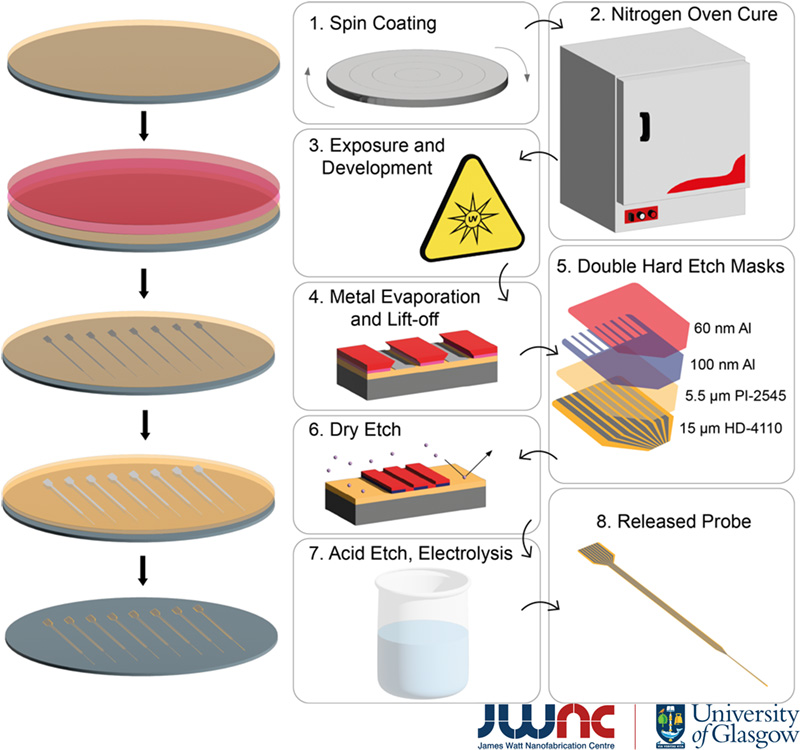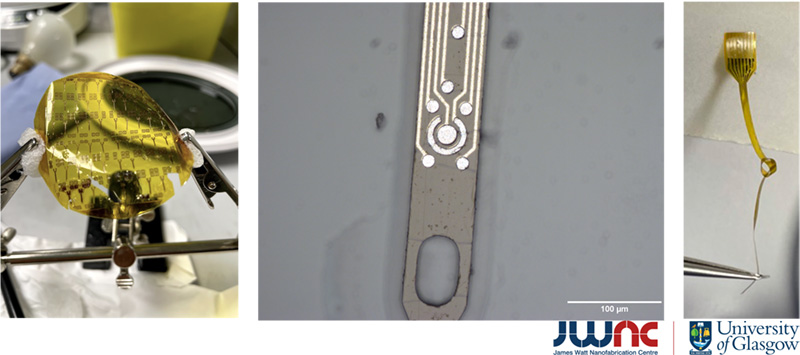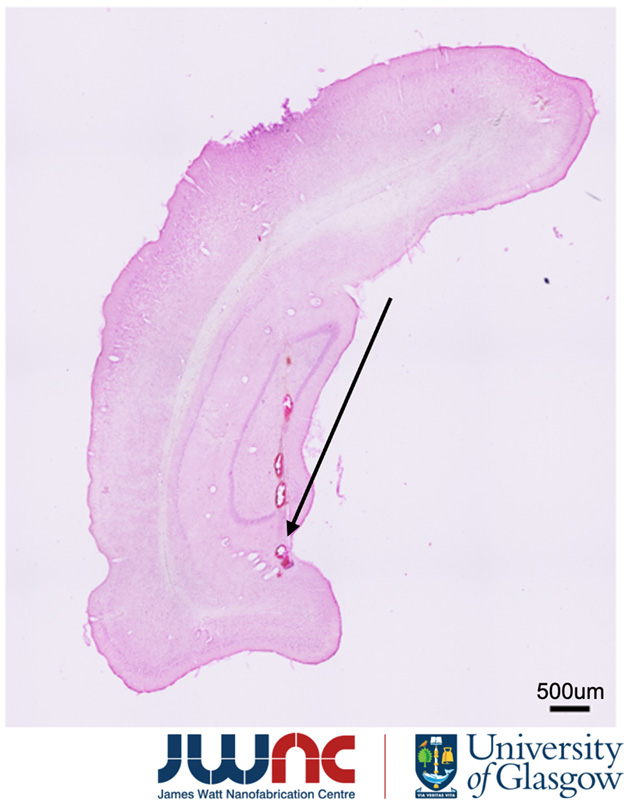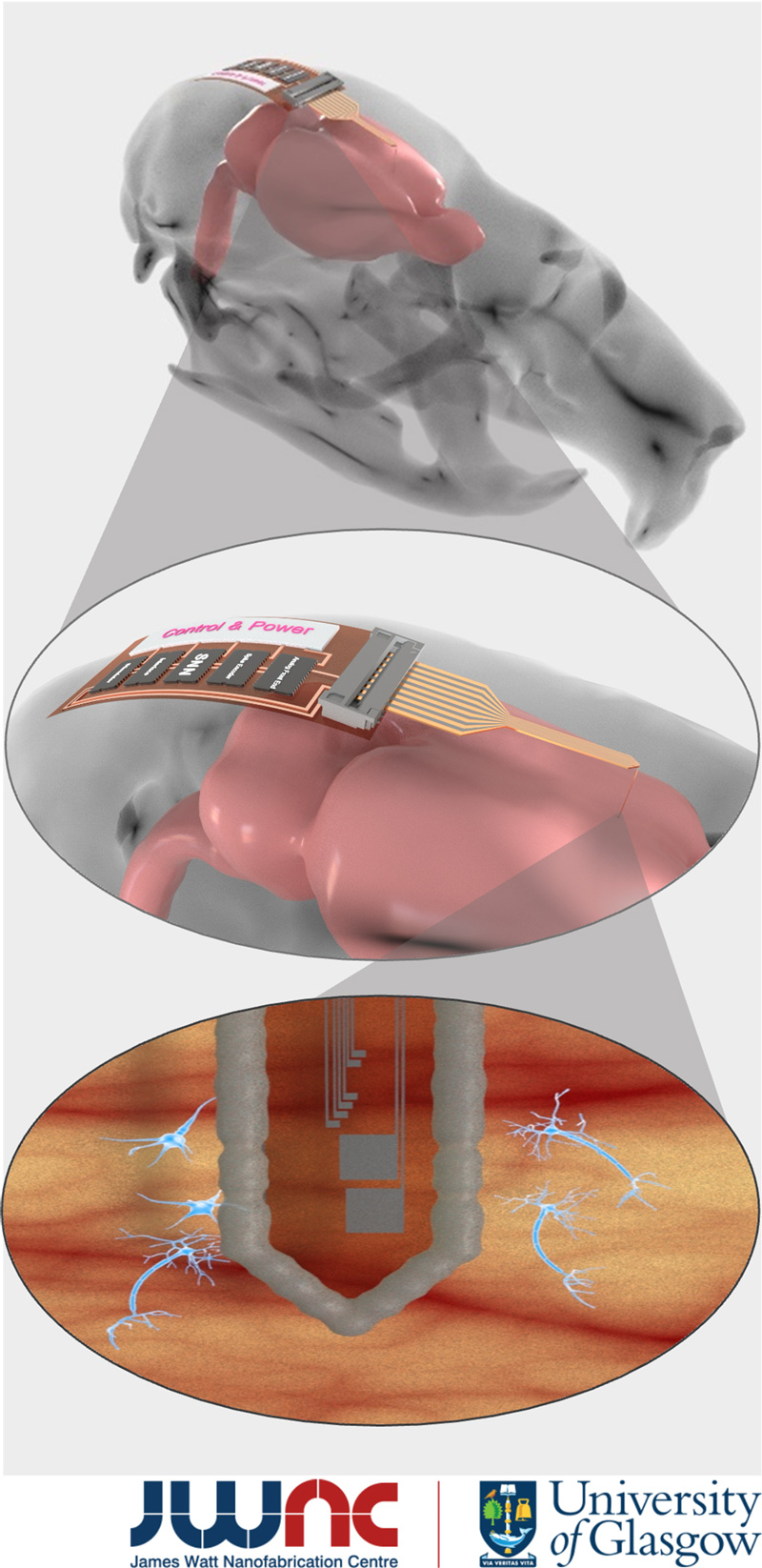Brain Implantable Hybrid Neuranics for Epilepsy Treatment
Published: 7 February 2025
Implantable neural devices have played a key role in neuromodulation since the 1870s. Conventional DBS probes can scar around the implantation site, however, Dr Eve McGlynn and Maria Cerezo-Sanchez explore whether Polymer-based probes can offer a solution to this issue.
Implantable neural devices have played a key role in neuromodulation since the earliest reports of cortical stimulation in the 1870s, the precursor to modern deep brain stimulation (DBS). Conventional DBS probes consist of stiff, needle-like structures and are usually Silicon-based. The disadvantage to these well-known probes is the significant glial scar they cause around the implantation site. Polymer-based probes, in particular Polyimide-based probes, offer a solution to this conundrum since they have a much lower Young’s Modulus (2-3 GPa) that offers higher flexibility, both in terms of fabrication and mechanical properties. Our strategy is to use cleanroom micro- and nanofabrication techniques such as photolithography to produce flexible electronic neural probes with µm-scale features.
 The design and fabrication of a neural probe for deep brain recording and stimulation is presented herein. Measuring 100 μm x 30 μm x 12 mm, with a total of eight electrodes (including two large stimulating electrodes), this is the narrowest bidirectional polyimide probe which has been assessed in vivo. 5 μm features were produced with standard cleanroom processes, and deep polyimide etching optimised for improved etch rate and reduced residue. The electrodes were characterised using electrochemistry and mechanical methods, confirming the usefulness of the platinum electrodes for prolonged implantation.
The design and fabrication of a neural probe for deep brain recording and stimulation is presented herein. Measuring 100 μm x 30 μm x 12 mm, with a total of eight electrodes (including two large stimulating electrodes), this is the narrowest bidirectional polyimide probe which has been assessed in vivo. 5 μm features were produced with standard cleanroom processes, and deep polyimide etching optimised for improved etch rate and reduced residue. The electrodes were characterised using electrochemistry and mechanical methods, confirming the usefulness of the platinum electrodes for prolonged implantation.

The probe design, produced in collaboration with neuroscientist partners, is robust and easily handled during live animal surgery, where they were implanted into the CA3 ventral region of the hippocampus in the deep brain. Presented is also a schematic of the implantable flexible neural probe. The bulk of the probe is comprised of PI-2545 and photodefinable HD-4110 with Ti/Pt microelectrodes as the conductive layer. The part which is inserted into the neural tissue is 25-50 µm thick and 100 µm wide. Such probes have the capability of delivering DBS for treatment of neurological disorders ranging from epilepsy to Parkinson’s Disease.

First published: 7 February 2025


